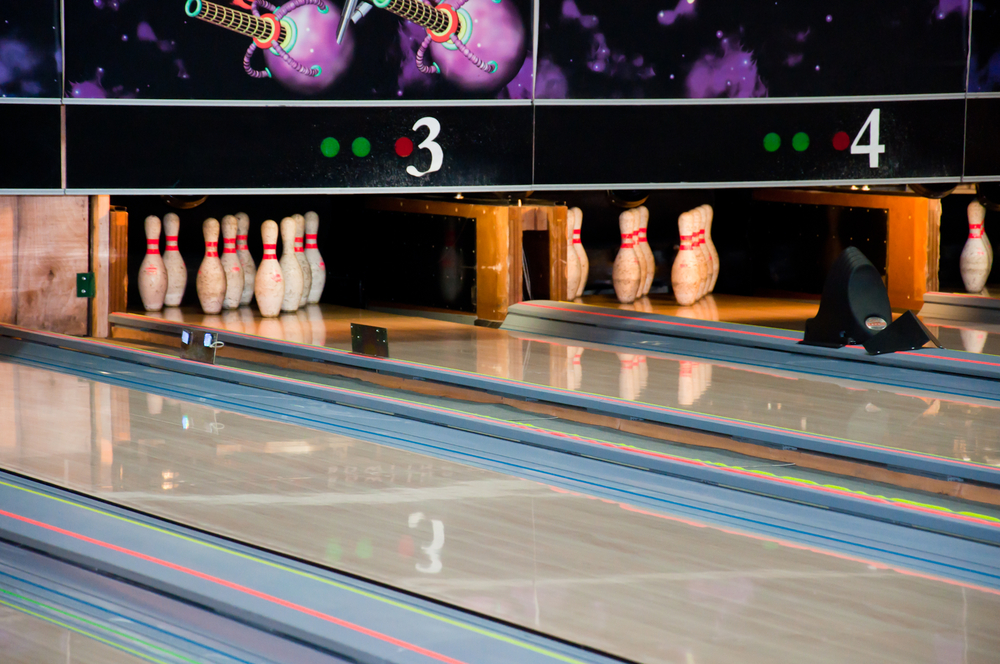
Though they're easy to overlook, bowling lanes are a vital part of any bowling match, and their value lies in their unique construction, but what are bowling lanes made of?
If you want to know, this article is precisely what you've been looking for.
In it, we will discuss bowling alley flooring, lane construction, and how it can impact your bowling experience. We will also provide tips on choosing the correct lane for your needs!
Contents
What Are Bowling Lanes Made of and Why?
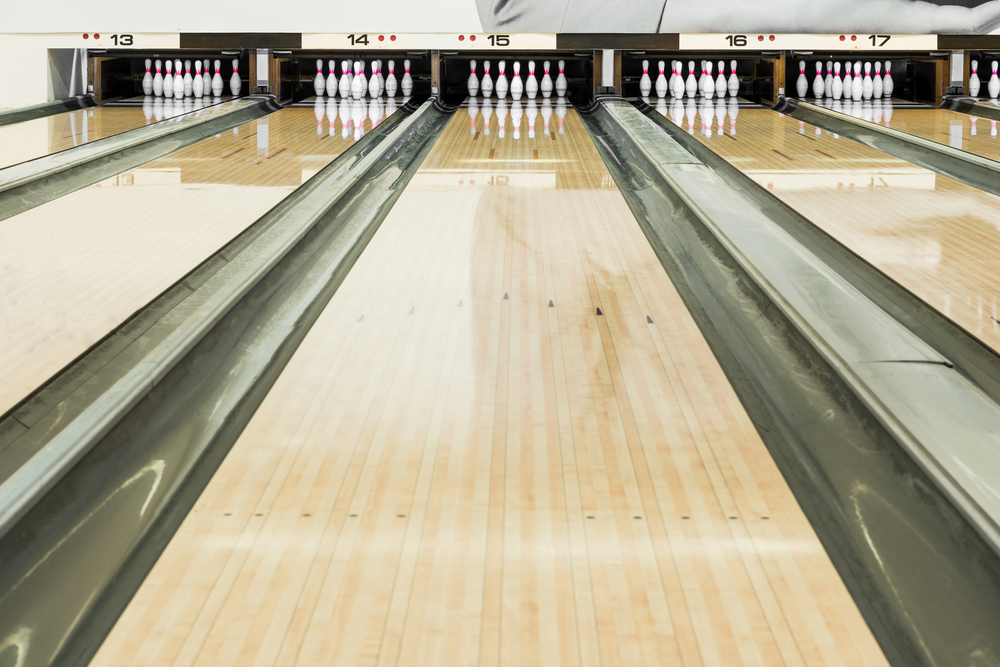
Bowling alley lanes are all about performance, longevity, and appearance. Most modern-day bowling lanes are made from three main materials, which we will break down below.
Wood
Traditionally, bowling lanes are made of two types of wood. The lane portion is typically made of pine, while the landing zone, approach, and pin deck are made of hard maple wood.
Bowling lanes simply take a lot of abuse daily, so they must be resistant enough to withstand heavy and repetitive stress.
Although it's a soft wood, pine is an excellent material because it doesn't shrink due to humidity or temperature changes. Maple, on the other hand, is sturdier than pine wood.
Maple flooring is more shock-resistant and doesn't have to be replaced very often.
Also, maple is highly dense and can be sanded multiple times without losing its shape. But because maple is more expensive than pine and other types of wood, it isn't as widely used in bowling alleys.
Even though it’s resilient, wood requires much more upkeep than nonorganic materials. As a result, some bowling equipment manufacturers have switched to cheaper, more reliable materials to build their lanes.
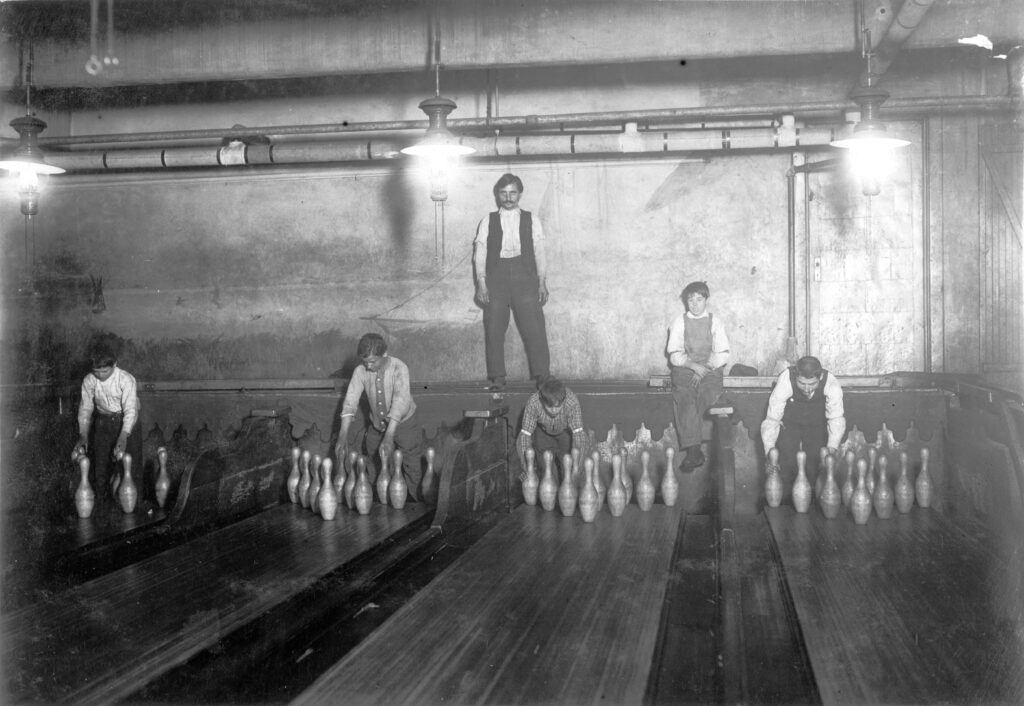
Wood Overlays
Some bowling lanes combine the classic look of wood with the durability of other materials. Their lanes may have transparent, synthetic overlays to help protect the delicate wood flooring underneath.
In those cases, the overlay is strictly on the area that incurs the most wear.
The synthetic overlay can be made from any number of materials but is most often made from some type of plastic blend.
Synthetic Materials
Most modern bowling lanes are made from a blend of synthetic materials. They are designed to look like bowling alley wood but don't require the same amount of upkeep.
These materials are also extremely durable, which is essential in a high-traffic area like a bowling alley.
One of the most popular synthetic materials used in lane construction is fiberglass.
Fiberglass is known to be sturdy and can be molded into any shape. It is also resistant to fire, water, and most chemicals.
As a result, fiberglass bowling lanes are less likely to warp or crack over time.
Another popular synthetic material is urethane. Urethane is a type of plastic often used to make bowling balls. It is also used in lane construction because it is tough and can be poured into any shape.
Urethane lanes don't absorb much oil or dirt, which makes them easy to clean.
What Were Early Bowling Lanes Made Of?
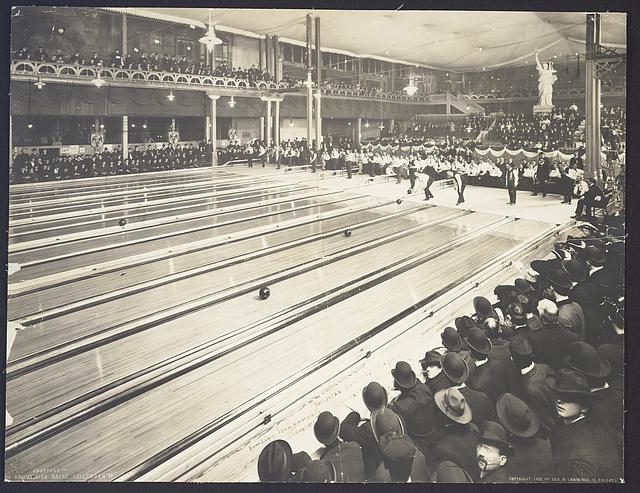
Early bowling lanes were made of wood, but they didn't have the same durability or performance as modern lanes. In fact, early lanes were often made from recycled materials like old barn boards or even whiskey barrels.
These lanes were far more likely to warp and crack, which made them less than ideal for bowling.
As time passed, bowling lane construction improved, and more reliable materials were used. However, wood remains a popular choice for many bowling alleys because of its classic look and feel.
What Is the Difference Between Wood and Synthetic Bowling Lanes?
Although synthetic and wooden bowling lanes look similar at first glance, there are some stark differences between the two. Here are the two most prominent ones:
- Synthetic bowling lanes are much more durable than wooden ones. They don't show wear and tear readily and don't need as much maintenance as pine and maple lanes.
- Wooden bowling lanes are more susceptible to warping and cracking than synthetic ones.
- Wooden bowling lanes require more maintenance than synthetic lanes. They must be regularly sanded and oiled.
Synthetic Vs. Wooden Bowling Lane: Which Is Better?
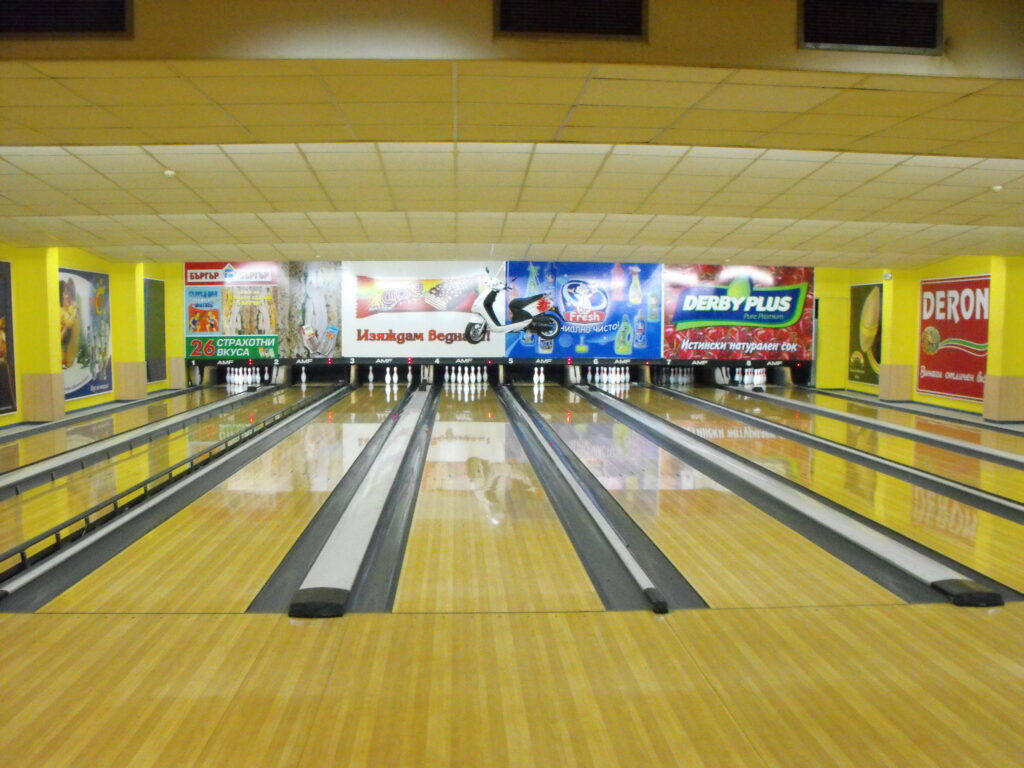
The truth is that both synthetic and wooden bowling lanes have their perks, and a lane option that suits one person may not suit another.
So, in the event that you need to choose between the two, it's worthwhile to know everything you can about both. In this section, we'll highlight the benefits of synthetic and wooden lanes.
Here are the main benefits of synthetic bowling lanes:
- Synthetic lanes are easy for beginners to play on, given that they don't provide much hooking potential. You can roll the bowling ball straight down the lane without any surprises.
- Synthetic lanes generally provide little friction, so your ball will roll further and faster.
- They're less likely to develop dents, chips, and scratches than wooden lanes.
Now, let's explore the benefits of wooden bowling lanes:
- Most people love the classic look of wooden lanes.
- Your ball might roll slowly on a wooden lane, but you'll have more control over the ball's trajectory, particularly toward the end of the lane. Avid and professional bowlers may prefer wooden bowling lanes for this reason.
Switching to synthetic lanes may be difficult if you usually bowl on wooden lanes.
You may need to use a different ball or adjust your rolling technique to bowl at the level you're used to. The same applies when switching from a synthetic lane to a wooden one.
If you’re new to bowling, we recommend that you test your skills on multiple bowling lanes. That’s the single best way to determine which lane type will be best suited to your playing style and strategy.
How Are Bowling Lanes Maintained?
Regardless of the material, bowling lanes need to be correctly maintained. In addition to looking better, adequately maintained bowling lanes are safer, better for your game, and longer lasting.
Are you wondering what it takes to keep them maintained?
Here are the steps bowling alleys take daily to keep their bowling lanes in peak condition. Bowling lanes need to be dusted one or more times a day.
They also need to be regularly disinfected. Once the lanes are clean, they need to be conditioned. Most alleys use a conditioner with mineral oil and a blend of synthetic additives.
Conditioning the lane helps protect the surface from scratches and dents and enables the material to last longer. It also creates a slippery surface, so the bowling balls aren't slowed down by friction.
Different bowling alleys use different conditioner blends that have varying levels of oiliness. So if you ever notice that you play better or worse at a particular lane, it may have to do with the type and amount of oil they use.
As the lanes are being dusted, cleaned, and conditioned, alley workers must constantly watch for signs of damage.
Minor problems can turn into enormous ones if they aren't addressed immediately.
This is particularly true for any portion of the lane that is frequently used or takes the brunt of the bowling ball's impact. High-traffic areas incur more wear and tear, so they must be replaced more often than other areas of the lane.
Related Articles
So, there you have it! Bowling lanes may be made from several different materials, but the most common are wood, synthetic materials, or a combination of the two.
If you remember nothing else from this article, remember that the material types can impact your game, so try to play on each lane type to see which one you prefer.
We hope this article has answered your questions and provided you with all the information you were looking for!
Kira Byrd, a Certified Fraud Examiner, holds a B.S. in Accounting from the University of Alabama at Birmingham. With a passion for bowling from her childhood, Kira has poured her expertise and personal experiences into creating and nurturing Bowling For Beginners. Kira's mission is to meet new bowlers where they are and guide them toward consistently achieving higher scores. With a focus on skill development and strategic techniques, she empowers readers to take control of their game and unlock their true potential.
Bowling For Beginners embodies strict editorial integrity, ensuring reliable and unbiased information. Kira's commitment to delivering valuable insights and practical strategies is reflected in every article. Here's an explanation of our editorial policy and how we get money.





